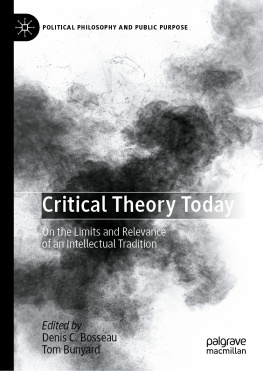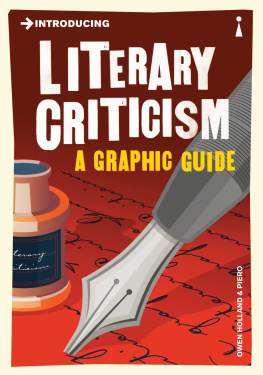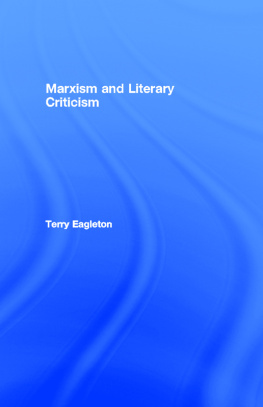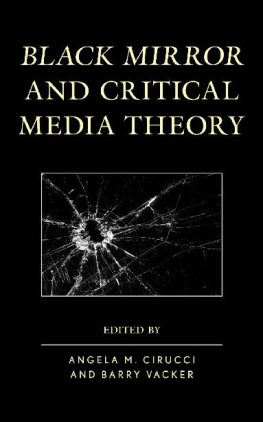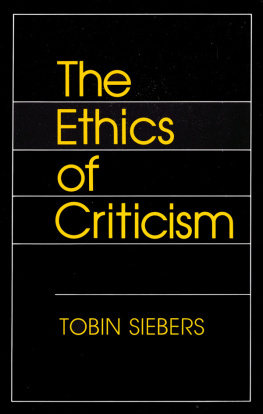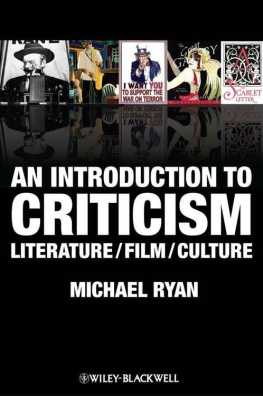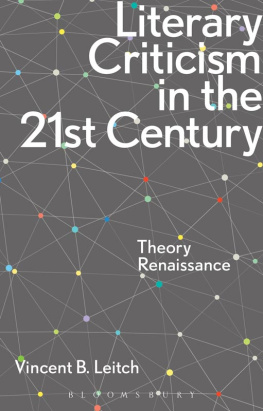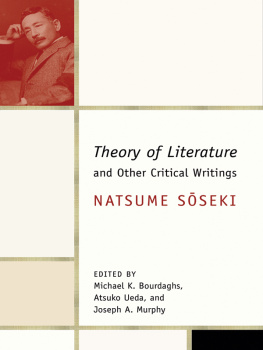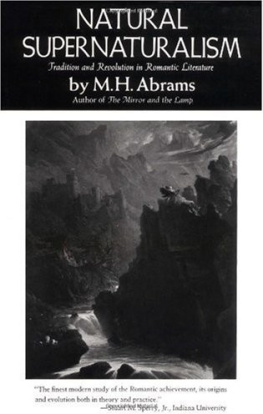Meyer H. Abrams - The Mirror and the Lamp: Romantic Theory and the Critical Tradition
Here you can read online Meyer H. Abrams - The Mirror and the Lamp: Romantic Theory and the Critical Tradition full text of the book (entire story) in english for free. Download pdf and epub, get meaning, cover and reviews about this ebook. year: 1971, publisher: Oxford University Press, USA, genre: Science. Description of the work, (preface) as well as reviews are available. Best literature library LitArk.com created for fans of good reading and offers a wide selection of genres:
Romance novel
Science fiction
Adventure
Detective
Science
History
Home and family
Prose
Art
Politics
Computer
Non-fiction
Religion
Business
Children
Humor
Choose a favorite category and find really read worthwhile books. Enjoy immersion in the world of imagination, feel the emotions of the characters or learn something new for yourself, make an fascinating discovery.

- Book:The Mirror and the Lamp: Romantic Theory and the Critical Tradition
- Author:
- Publisher:Oxford University Press, USA
- Genre:
- Year:1971
- Rating:4 / 5
- Favourites:Add to favourites
- Your mark:
- 80
- 1
- 2
- 3
- 4
- 5
The Mirror and the Lamp: Romantic Theory and the Critical Tradition: summary, description and annotation
We offer to read an annotation, description, summary or preface (depends on what the author of the book "The Mirror and the Lamp: Romantic Theory and the Critical Tradition" wrote himself). If you haven't found the necessary information about the book — write in the comments, we will try to find it.
Meyer H. Abrams: author's other books
Who wrote The Mirror and the Lamp: Romantic Theory and the Critical Tradition? Find out the surname, the name of the author of the book and a list of all author's works by series.
The Mirror and the Lamp: Romantic Theory and the Critical Tradition — read online for free the complete book (whole text) full work
Below is the text of the book, divided by pages. System saving the place of the last page read, allows you to conveniently read the book "The Mirror and the Lamp: Romantic Theory and the Critical Tradition" online for free, without having to search again every time where you left off. Put a bookmark, and you can go to the page where you finished reading at any time.
Font size:
Interval:
Bookmark:
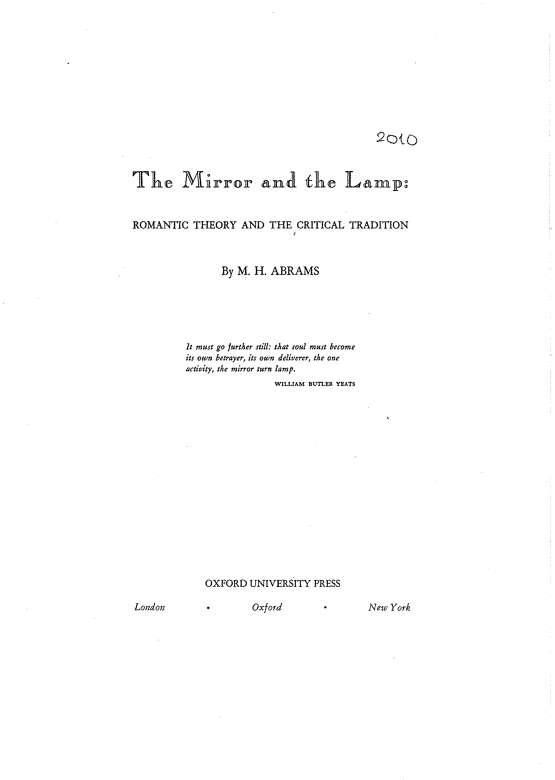
OXFORD UNIVERSITY PRESS
Oxford London Glasgow
New York Toronto Melbourne Wellington
Nairobi Dares Salaam Cape Town
Kuala Lumpur Singapore Jakarta Hong Kong Tokyo
Delhi Bombay Calcutta Madras Karachi
To %Uth
ISBN-13 978-0-19-501471-6
Copyright 1953 by Oxford" University Press, Inc.
Library of Congress Catalogue Card Number: 53-7616
First published by Oxford University Press, 1953
First issued as an Oxford University Press paperback, 1971
PRINTED IN THE UNITED STATES OF AMERICA
Preface
The development of literary theory in the lifetime of Coleridge was to a surprising extent the making of the modern critical mind. There were many important differences between, let us say, Horace's Art of Poetry and the criticism of Dr. Johnson, but there was also a discernible continuity in premises, aims, and methods. This continuity was broken by the theories of romantic writers, English and German; and their innovations include many of the points of view and procedures which make the characteristic differences between traditional criticism and the criticism of our own time, including some criticism which professes to be anti-romantic.
The primary concern of this book is with the English theory of poetry, and to a lesser extent of the other major arts, during the first four decades of the nineteenth century. It stresses the common orientation which justifies us in identifying a specifically 'romantic' criticism; but not, I trust, at the cost of overlooking the many important diversities among the writers who concerned themselves with the nature of poetry or art, its psychological genesis, its constitution and kinds, its major criteria, and its relation to other important human concerns. The book deals, for the most part, with the original and enduring critics of the time, rather than with the run-okhe-mill reviewers who often had a more immediate, though shorter-lived influence on the general reading public.
In order to emphasize the pivotal position of the age in the general history of criticism, I have treated English romantic theory in a broad intellectual context, and I have tried to keep constantly in view the background of eighteenth-century aesthetics from which romantic aesthetics was in part a development, and against which it was, still more, a deliberate reaction. I have described some of the relations of English critical theory to foreign thought, especially to the richly suggestive German speculations of the age, beginning with Herder and Kant, when Germany replaced England and France as the chief exporter of ideas to the Western world. I have also moved freely in time, going back to the Greek and Roman origins of aes
PREFACE
thetic thought and ahead to various critical ideas current today. Finally, I have undertaken, although briefly, to trace the origins o prominent romantic ideas, not only in earlier aesthetic discussion, but also in philosophy, ethics, theology, and in the theories and discoveries of the natural sciences. In aesthetics, as in other provinces of inquiry, radical novelties frequently turn out to be migrant ideas which, in their native intellectual habitat, were commonplaces.
The title of the book identifies two common and antithetic metaphors of mind, one comparing the mind to a reflector of external objects, the other to a radiant projector which makes a contribution to the objects it perceives. The first of these was characteristic of much of the thinking from Plato to the eighteenth century; the second typifies the prevailing romantic conception of the poetic mind. I have attempted the experiment of taking these and various other metaphors no less seriously when they occur in criticism than when they occur in poetry; for in both provinces the recourse to metaphor, although directed to different ends, is perhaps equally functional. Critical thinking, like that in all areas of human interest, has been in considerable part thinking in parallels, and critical argument has to that extent been an argument from analogy. As this inquiry will indicate, a number of concepts most rewarding in clarifying the nature and criteria of art were not found simply in the examination of aesthetic facts, but seem to have emerged from the exploration of serviceable analogues, whose properties were, by metaphorical transfer, predicated of a work of art. From this point of view the shift from neo-classJc to romantic criticism can be formulated, in a preliminary way, as a radical alteration in the typical metaphors of
critical discourse.
The bringing of submerged analogies into the open puts certain old facts into a new and, it seems to me, a revealing perspective. Perhaps the attempt may deserve the measured commendation Dr. Johnson awarded to Lord Karnes: He 'has taken the right method in his Elements of Criticism. I do not mean he has taught us anything, but he has told us old things in a new way.' There are, however, many profitable ways to approach the history of criticism. 1 have tried to use whatever ways seemed most pertinent, and to restrict the analysis of basic metaphors to problems in which this approach promised genuine illumination.
This book had its distant origin in a study of the writings of Johnson and Coleridge, under the stimulating direction of I. A. Richards at Cambridge University, and it was developed at Harvard University with the guidance and encouragement of my mentor and friend, the late Theodore Spencer. In
PREFACE
the ten years and more that the work has been in progress, 1 have incurred many intellectual obligations which are indicated in the text and footnotes. In this place I wish to acknowledge both a Rockefeller Fellowship, which gave me an invaluable year for catching up broken threads after the war, and a grant for summer research from Corr/ell University. I wish also gratefully to record the material assistance of many colleagues and friends. Victor Lange and Israel S, Stamm helped me make my way through the intricacies of German criticism; and Harry Caplan, James Hutton, and Friedrich Solmsen have been valuable sources of information on classical and medieval matters. I have had access to the full resources of the Cornell and Harvard University Libraries; and H. H. King, of the Cornell Library staff, whose services were made available to me by a grant from the Cornell Graduate School, has been of great assistance in verifying quotations and in many bibliographical matters. Richard Harter Fogle and Francis E. Mineka have made a number of useful suggestions. William Rea Keast undertook to read the entire manuscript, at a time when he was heavily burdened by other enterprises; the book has benefited in a great many ways from his command of the history and methods of criticism. To my wife I owe the greatest debt, for her fortitude and her unfailing cheerfulness while doing and redoing the most laborious of the tasks needed to make ready this book.
Some of the material incorporated in the seventh chapter appeared in an article, 'Archetypal Analogies in the Language of Criticism,' The University of Toronto Quarterly, July 1949.
M. H. A. Cornell University Summer 1953
m.
Contents
Preface, vit
I. INTRODUCTION: ORIENTATION OF CRITICAL THEORIES, 3
1, Some Co-ordinates of Art Criticism, 6 H. Mimetic Theories, 8 jii. Pragmatic Theories, 14 iv. Expressive Theories, ar v. Objective Theories, 26
II. IMITATION AND THE MIRROR, 30
t. Art Is Like a Mirror, 31
ii. The Objects of Imitation: the Empirical Ideal, 35 iii. The Transcendental Ideal, 42
III. ROMANTIC ANALOGUES OF ART AND MIND, 47
i. Metaphors of Expression, 48 ii. Emotion and the Objects of Poetry, 53 iii. Changing Metaphors of Mind, 57
Font size:
Interval:
Bookmark:
Similar books «The Mirror and the Lamp: Romantic Theory and the Critical Tradition»
Look at similar books to The Mirror and the Lamp: Romantic Theory and the Critical Tradition. We have selected literature similar in name and meaning in the hope of providing readers with more options to find new, interesting, not yet read works.
Discussion, reviews of the book The Mirror and the Lamp: Romantic Theory and the Critical Tradition and just readers' own opinions. Leave your comments, write what you think about the work, its meaning or the main characters. Specify what exactly you liked and what you didn't like, and why you think so.

